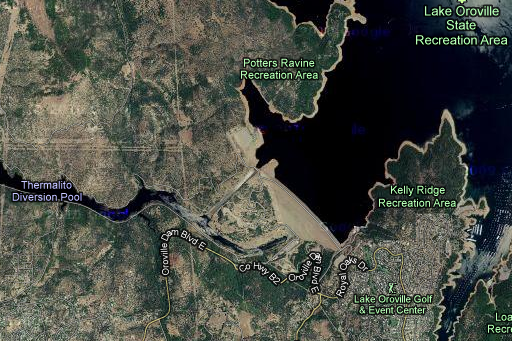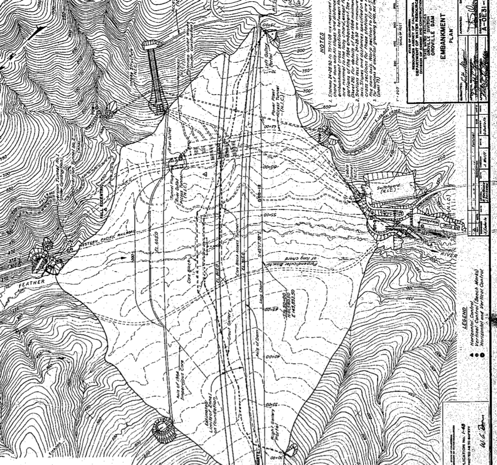


|
Oroville Dam |

|
Resource Terrorism Risk
Printer Friendly PDF

|
Oroville Dam represents hydroelectric plants with submerged inlet works. It is also the most common dam type; rammed earth. Oroville and Trinity Dams are very large structures for hydroelectric power production. More importantly, they provide drinking and irrigation water through the massive lakes they create. California is suffering decade long drought conditions. Farmers struggle to receive water to irrigate their lands and find themselves on the losing side of a battle with environmental groups more interested in protecting fish than humans. The loss of either of these dams can devastate California's agricultural industry. With the inlet works below water there is no security. Fishing is allowed in the area. A dive team breaches the trash racks and deposits explosives. Flow through the pipes is roughly 8-mph, and strong enough to deliver the package. However, the penstock diagrams show internal obstacles that prevent the explosives from reaching the generators. But, they are not the target. |

|
Earth-fill dams are cost effective and have many design options. However, they are all susceptible to collapse from water intrusion. Seepage can weaken the internal fill to damage the downstream embankment shell. Long exposure essentially turns the dam to mush and it collapses. The explosives are designed to create massive internal damage to the fill layers making it very difficult to repair. It gives nature time to bring the entire structure down. There is no security preventing this form of attack. Just one terrorist can collapse this structure. Approximately eight-thousand dams are located in the States, and ninety-thousand in the world. They all suffer the same security flaw at different degrees of severity. Oroville Dam feeds irrigation water into the heart of California's agricultural industry. This structure represents a resource-terrorism target. |

Copyright © 2011 by John Gregorek